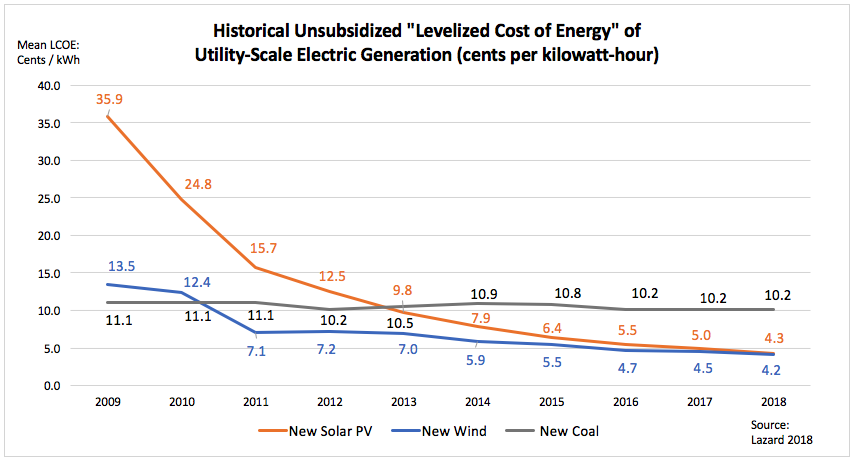
by Tyler Huebner | Feb 13, 2019 | Renewables
Yesterday, Wisconsin Manufacturers and Commerce President Kurt Bauer issued a statement regarding Wisconsin Governor Tony Evers’ pledge to join an effort to reduce Wisconsin’s carbon emissions in accordance with the goals of the “Paris Climate Accord.” Regardless of your position on climate change or the Paris Climate Accord, Mr. Bauer’s assertions about the economics of reducing carbon emissions are based on outdated math, especially as it relates to the price of electricity and switching to renewable energy.
Since 2009, the cost of delivered electricity from new wind energy farms has declined 69%, and the cost of delivered electricity from new utility-scale solar farms has declined 88%.
In their “Levelized Cost of Energy Version 12.0,” (available here) released in November 2018 by Lazard, a respected international finance company, the numbers about the unsubsidized cost of renewable energy are plainly spelled out.
Furthermore, a recent open bidding process in Colorado resulted in dozens of wind, solar, and battery storage proposals. Selecting the lowest-cost set of projects, Colorado policymakers and the utility were able to identify a set of projects that replaced existing coal generation while saving ratepayers $213 million to $374 million. (Source: Greentech Media)
Major Wisconsin utilities are currently pursuing their own least-cost pathway to future electric generation, and it involves shutting down older, less-efficient, and more costly coal plants while reinvesting in new wind and solar generation. Why? In their own words, it will save their customers money.
Just yesterday, in its quarterly earnings call, WEC Energy Group, which produces about half of the electricity used in Wisconsin, Executive Chairman Gale Klappa said “[W]e made real progress in reducing our carbon dioxide emissions. In fact, we are on track to exceed our goal of 40% reduction below 2005 levels by the year 2030. Now we expect to achieve that goal by 2023.”
The times have changed, and Wisconsin Manufacturer & Commerce’s math is outdated. Corporate America, including some of Wisconsin’s best job creators and industries of the future, are investing in renewable energy, saving money, and creating jobs.
Instead of just saying no, we would encourage WMC and its members to work with the renewable energy industry, electricity providers, Governor Evers, and the Legislature to pursue cost effective ways to take advantage of the new economics and technology advances in renewable energy. Renewable energy is now a job-creating and money-saving opportunity for its members and all businesses across Wisconsin.
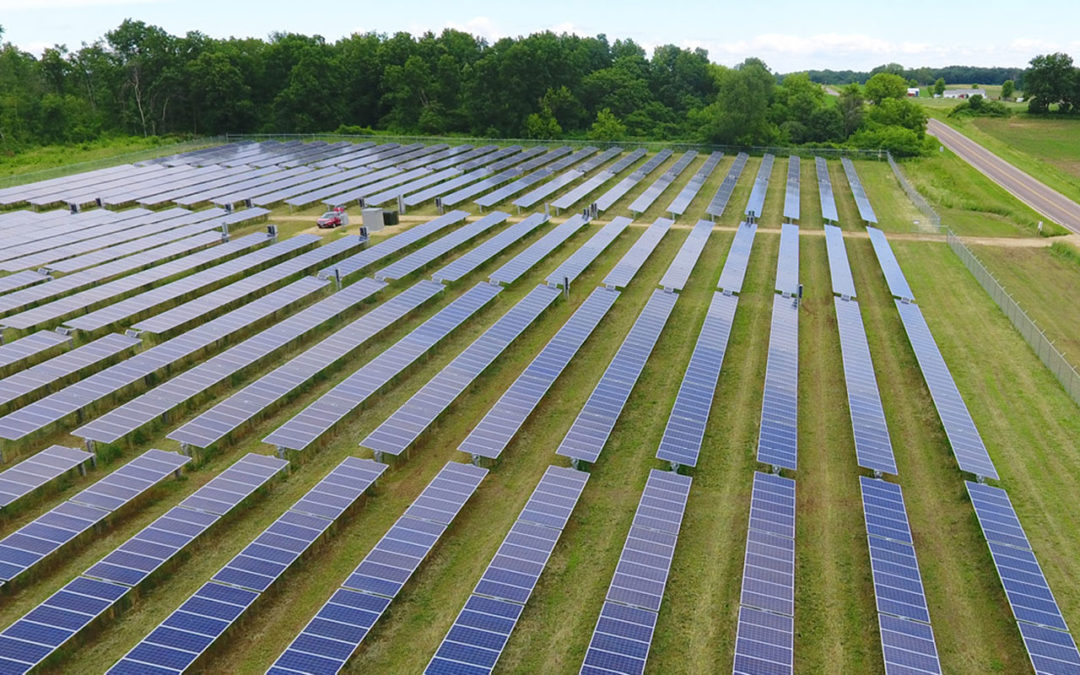
by Michael Vickerman | Feb 11, 2019 | Renewables, Solar
Saratoga Wind
Owner: Madison Gas and Electric
Location: Howard County, Iowa
Status: Online as of February 2019
Approved by the Public Service Commission in November 2017, Saratoga Wind is a 33-turbine installation totaling 66 megawatts (MW). MGE broke ground on the project in early 2018. Now operational, Saratoga is expected to generate between 275 and 300 million kilowatt-hours of electricity annually. Click here to watch a short, time-lapse video of Saratoga’s the construction.
Western Wisconsin Solar Arrays
Owner: OneEnergy Renewables
Locations in Wisconsin: Arcadia, Argyle, Cashton, Cumberland, Elroy, Fennimore, and New Lisbon
Total Capacity: 31 MWDC, 26 MW
Status: Under construction. All should be operating by June 2019.
OneEnergy is breaking ground this week on 10 solar arrays in the Upper Midwest that will supply electricity directly to municipal electric utilities in western Wisconsin and Minnesota. Seven of these installations will be located in Wisconsin. The financing for these projects is coming from multiple sources, among them Organic Valley, the City of Madison, and project owner BluEarth Renewables. In exchange for their contributions to the projects’ financing, Organic Valley and the City of Madison will acquire all the renewable energy attributes from the specific installations they are supporting. When the projects begin generating power this summer, the Arcadia array, sized at 7.45 MWdc (5 MWac), will become the largest solar array in the state of Wisconsin. Plymouth-based Arch Electric will construct several of the arrays.
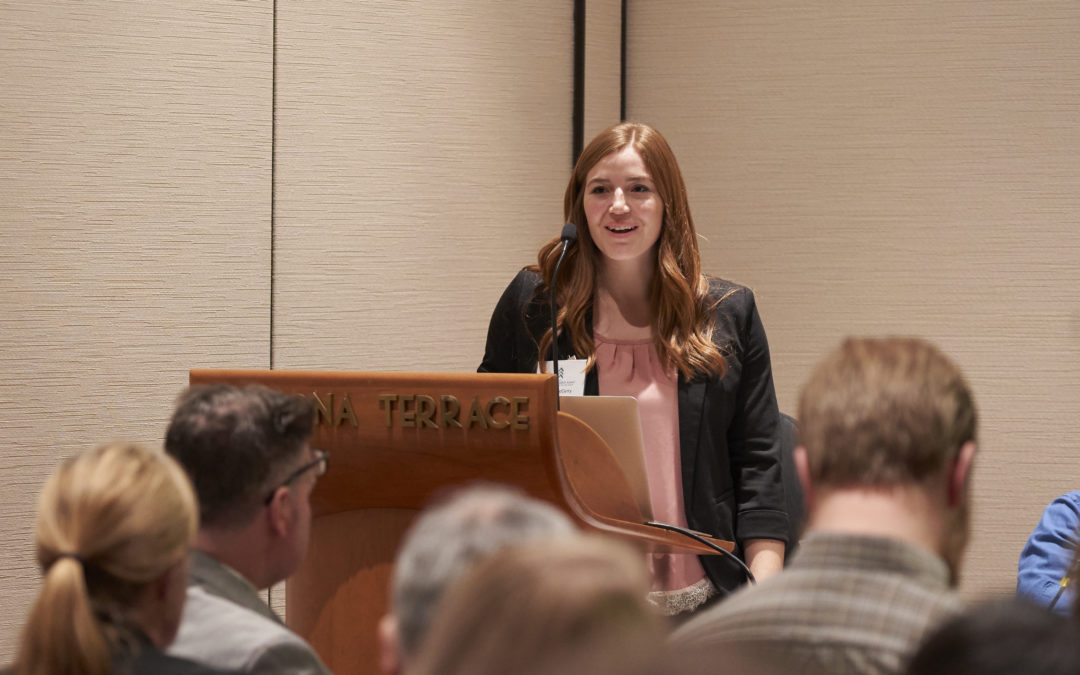
by Jane McCurry | Feb 6, 2019 | Electric Vehicles, Events, RENEW Wisconsin
January was a busy month bopping between energy summits. On January 17th we had our Renewable Energy Summit in Madison and January 24 – 25 the Wisconsin Academy of Sciences, Arts, and Letters held the Powering Local Leadership Summit in Appleton.
Both summits had electric vehicle panels, and both were awesome.
Renewable Energy Summit: Electric Vehicles
This was the first time we had an electric vehicle session at the Renewable Energy Summit. Our space ended up being standing room only so I’d say it was a success. We emphasized the benefits that electric vehicles provide, no matter what business you are in.
Dan Steinhart and Mike Cornell kicked off the presentations, representing Arch Electric EV, the recently incorporated subsidiary company of Arch Electric. Arch Electric EV will house their electric vehicle charging station business. Arch is primarily a solar photovoltaic (PV) installer that has recently been in contact with over 100 businesses to gain a better perspective on the market and demand for electric vehicle (EV) recharging infrastructure. Their motto is that PV + EV = Sustainable Transportation.
Becky Cooper from Bounce Milwaukee shared her family business’s experiences with pizza delivery electric vehicles. In addition to providing family-fun of all kinds, Bounce Milwaukee owns electric Leafs that they use to deliver pizzas. Their rooftop solar array and electric pizza ovens mean their pizzas are both made and delivered on sunshine. Bounce Milwaukee uses electric cars because they’re affordable, efficient, and provide a better customer experience, in addition to boosting their brand as an early adopter of clean energy technology!
We also heard from Mahanth Joishy about the City of Madison’s commitment to low emission transportation. The city currently owns 3 Chevy Bolts and acquired a grant to purchase 20 more in 2019 and 2020. Additionally, the city has a biodiesel pilot project, 6 hybrid police vehicles, anti-idling technology on ambulances, is working on specs for compressed natural gas (CNG) trucks, and is outfitting vehicles with GPS tracking to even further optimize routes and decrease fuel use.
This session was a really excellent exercise in seeing the various ways that electric transportation can benefit all different kinds of organizations. From companies already invested in the energy transition to local family-centric businesses, and even local governments, there’s a lot to be gained from electric transportation.
Check out the slides and audio to learn more.
Powering Local Leadership Summit: Preparing Your Community for Electric Transportation
The Powering Local Leadership session had a more focused goal: provide local leaders the tools to prepare their communities for the transition to electric transportation. I kicked things off with an overview of the myriad of benefits of electric vehicles (to name a few: cheaper to operate, no tailpipe pollution, quiet, fun to drive, and convenient to refuel).
Ashwat Narayanan from 1000 Friends of Wisconsin reiterated the point that electric vehicles can solve many problems. They are not, however, a magic bullet to solving all of our transportation issues. We have to prioritize people – bikers, bus riders, and car sharers – over actual cars.
Jeff Springer from Dairyland Power Cooperative emphasized that electric vehicles have both an awareness issue and a rural issue. We need to help electricity coops through the process of getting the word out about electric vehicles, transitioning their fleets, and installing charging stations in their area. Rural solutions are also necessary – pickup trucks, SUVs, and farm equipment – all of which is coming to the market soon.
Finally, Peter Skopec from WISPIRG gave hope that with sales at an all-time high, communities really do need to be preparing for thousands of electric vehicles on their streets soon. The charging infrastructure needs to be built out, especially for folks who live in multifamily units and urban areas without access to overnight charging.
The audience had great questions that ran the gamut from gas station interest in electrification (there is some interest), to Volkswagen Settlement Funding (a huge opportunity for building electric vehicle infrastructure), and if mechanics need additional training to work on electric cars (yes, we want mechanics to be comfortable working on these cars).
I learned a ton from moderating these panels! Thanks to the panelists for joining me, and thank you for reading about them here. For those of you who couldn’t make it, I hope you can join us next year!
by Jane McCurry | Jan 23, 2019 | Electric Vehicles
Back in October I wrote a blog, Momentum is Building, about the hundreds of new electric cars that will hit the market in the next few years. Then, in the last blog I talked about how the market for electric cars in the US is exploding, up 80% from 2017. The result? Lots of electric cars coming to market in 2019.
Now, we have a preview of cars that will arrive in 2019. I read almost a dozen articles that previewed the 2019 electric car market. Here is my summary, thanks in large part to Green Car Reports.
2019 Electric Car Preview
2019 Hyundai Kona Electric
When: Any day
Range: 258 miles
Price: $37,495
What’s cool: Finalist in Green Car Reports’ Best Car to Buy competition for 2019.
2019 Kia Niro EV
When: Expected in February
Range: 239 miles
Price: $38,000
What’s cool: Completes the line-up of ecofriendly Niro models by joining the hybrid and PHEV models.
2019 Nissan Leaf Plus
When: Spring 2019
Range: 226 miles
Price: ~$30,000
What’s cool: Improved acceleration and faster charging means this isn’t your typical Leaf
2019 Audi e-tron quattro
When: Second quarter 2019
Range: 248 miles
Price: $75,795
What’s cool: Another electric SUV!
2020 Porsche Taycan
When: Late 2019
Range: 300 miles
Price: $90,000
What’s cool: Can receive 240 miles of charge in only 10 minutes
Additionally, the 2019 Volkswagen ID will arrive in late 2019, but it’s only slated to appear in Europe.
Ford will also have a 2020 electric SUV, which is rumored to have a 300-mile range. More details could be announced in 2019, though the vehicle is not likely to be available for purchase before 2020.
Other models that may be out by the end of the year include: The 2020 Kia Soul EV, 2020 BMW iX3, 2020 Mercedes-Benz EQC, 2020 Polestar 2 and 2020 Mini Cooper Electric. Details are scant so far, but I’ll keep you updated if I hear more about pricing, range, or if/when they’ll be available in the US.
My Analysis: We’re moving in the right direction
Folks who have been waiting for an electric SUV or another option for an electric car should be extremely excited by these new options! The Chevy Bolt and Tesla Model 3 now have real competition from several vehicles with comparable range and prices, like the Kona, Niro, and Leaf Plus.
My concern is the lack of lower priced options. However, if the Leaf Plus does end up coming in near $30,000, then prices are moving in the right direction. Still, that’s a fairly expensive car. Electric vehicles need to be accessible to the average car buyer in order to reach market penetration. We aren’t quite there yet, but I’m hopeful we will be soon.
As first and second-generation electric car drivers swap their ride for one of these new options, it will put more used electric vehicles into the market. These cars will have a lower upfront price, making them more accessible for the average car buyer. More on this topic in a future blog post.
Until then, head to your local dealer and test drive some electric vehicles. Let me know how it goes!
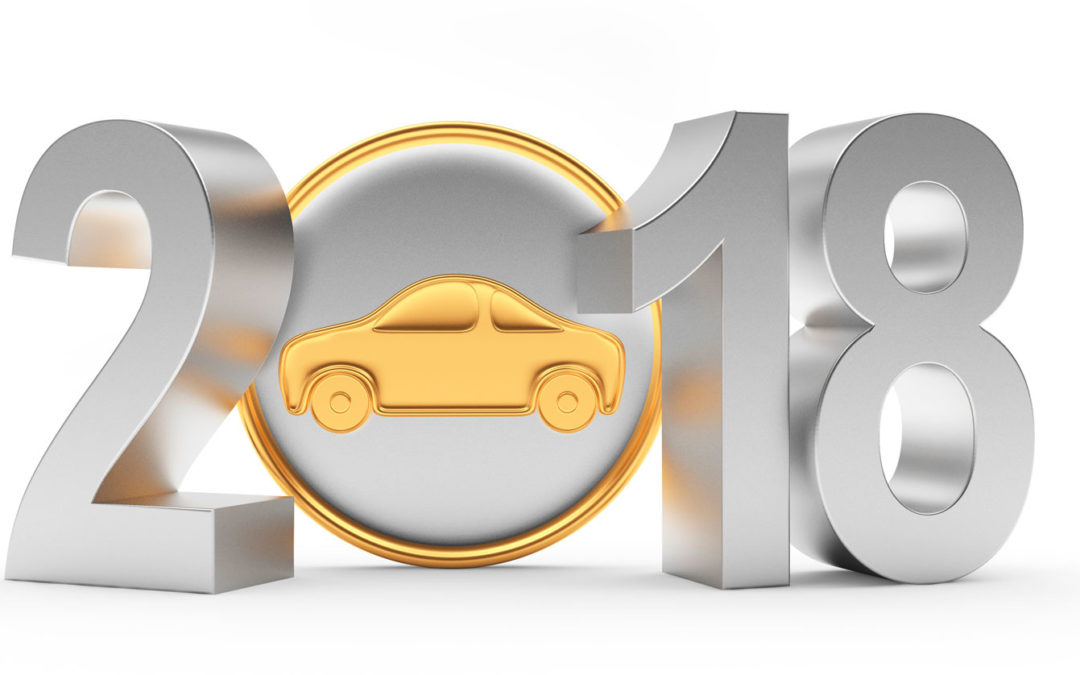
by Jane McCurry | Jan 9, 2019 | Electric Vehicles
2018 was a year of tremendous growth in the electric vehicle market. We saw new electric cars released (and one of our favorites get cancelled), two manufacturers hit the 200,000-vehicle tax credit cap, and across the county we hit record sales numbers. A few highlights include:
It’s safe to say the electric vehicle market is officially on the rise. We ended the year with 361,307 electric cars sold across the country, making up 6% of all passenger car sales!
2 Manufacturers Hit Tax Credit Cap
Tesla and GM have both sold over 200,000 electric vehicles. A great start down the adoption curve for electric cars, but also a signal that customers won’t receive their full tax credit on these cars any more.
After a manufacturer has sold 200,000 electric vehicles, the consumer tax incentive is reduced for that manufacturer’s vehicles. The full tax credit, $7500, remains for the rest of the quarter in which they hit the cap, plus the next quarter. After that, the tax credit is halved for 6 months, then halved again for the next 6 months, before expiring entirely.
Tesla hit the 200,000-vehicle cap in July, 2018 so their tax credit went from the full $7,500 to $3750 on January 1. From July 1 to the end of the year it’s halved again, to $1,875. Tesla buyers won’t see any tax credit in 2020.
GM hit the 200,000 mark in December, 2019 due to their all-electric Chevy Bolt and popular, although discontinued, plug-in hybrid, the Chevy Volt. GM vehicles can receive the full credit until March 31st. From April 1 to September 30 buyers will get the halved credit of $3750, and then $1875 until March 31st 2020.
Tesla made for a record-setting December
In December, 49,900 electric vehicles were sold – 10% of passenger car sales that month! 50% of those sales were thanks to the Tesla Model 3. Tesla pushed hard for customers to order their car before the end of the year because of the tax credit deadline. They went so far as to keep stores open until midnight on New Year’s Eve to get as many customers into inventoried vehicles as possible.
What it means for 2019
2019 is an excellent year to go electric, especially if you have your eye on a Tesla or GM model and want to capitalize on the tax credits. Manufacturers have been pushing to extend the tax credits, though with limited success. Their reason being that it’s unfair to penalize the manufacturers that are first to market by reducing the consumer incentive to purchase their vehicles. And I agree – why punish the innovators? I’m expecting to see more activity around the subject in 2019.
There are also a number of new electric vehicles coming to market. Hopefully we’ll see more SUV and truck options hit the streets in the next few months. From Kia and Hyundai, to BMW and newcomers like Rivian and Faraday Future, it’s shaping up to be an exciting year for electric car debuts.
In the next blog, I’ll do roundup of new models that will be available in 2019.

by Tyler Huebner | Jan 4, 2019 | Solar, Utilities
Just before the holidays, We Energies received approval from the Public Service Commission to begin two new renewable energy pilot programs.
The first is called the Dedicated Renewable Energy Resource program and would allow commercial, industrial, and local government customers to access large-scale renewable energy projects. The projects would allow larger customers to meet their sustainability and renewable energy goals, while potentially saving money, and We Energies could supply up to 150 megawatts of existing customer load with renewable energy through this program. The program would also allow an unlimited amount of new load to be served with renewable energy through this program.
The second program, called Solar Now, would enable We Energies to lease roof or ground space from customers. We Energies would own the solar projects, and pay lease payments to the host customers. The program could build up to 35 megawatts of solar. RENEW Members had various opinions about this program, which were reflected in our comments filed with the PSC.
We will keep you apprised as these programs roll out.

by Heather Allen | Jan 4, 2019 | RENEW Wisconsin, Renewables, Solar, Utilities, Wind
Home-grown renewable electricity is poised for a big breakout this year. Two solar projects large enough to replace fossil-fuel power plants are making headway, while utilities in Wisconsin have made stronger renewable energy commitments. At the same time an accelerating number of nonprofit organizations, businesses, and citizens are turning to renewable energy for their own use.
Hearings are set this month for the Badger Hollow Solar Farm in Iowa County and the Two Creeks solar project in Manitowoc and Kewaunee Counties. The Public Service Commission will likely decide whether to approve of the two projects in mid-March. The utilities Wisconsin Public Service (based in Green Bay) and Madison Gas & Electric plan to acquire 300 megawatts of generation capacity from these plants, enough to power over 70,000 average Wisconsin households. If the two projects are approved, the utilities will be able to reduce their fossil-fuel emissions while increasing supplies of renewable power in their energy generation mix.
We expect another wave of large solar power plants to follow soon after the PSC issues decisions on Badger Hollow and Two Creeks.
Wisconsin electric providers are driving this transition to renewable energy through their recently announced plans to scale back carbon emissions.
WI Utility Commitments to Reduce Carbon Emissions and Increase Renewable Energy
UTILITY
|
APPROXIMATE NUMBER OF CUSTOMERS
|
CURRENT WI RENEWABLES MIX
|
STATED GOALS OR RECENT ACTIONS
|
WEC (WE Energies and Wisc. Public Service)
|
1.1 million + 440,000
|
7% WE
7.8% WPS
|
80% CO2 reduction by 2050
|
Alliant (WI Power and Light)
|
460,000
|
13.3%
|
29% renewables by 2024
80% CO2 reduction by 2050
|
Dairyland Power
|
258,000
|
14.4%
|
PPAs for 98 MW Wind (2017), 20 MW solar (2016), 80 MW Iowa Wind (2016)
|
Xcel Energy
|
256,000
|
28% (systemwide)
|
80% CO2 reduction by 2030
100% CO2 reduction by 2050
|
WPPI Energy
|
200,000
|
14.5%
|
PPAs for 132 MW wind (2018) and 99 MW solar (2020)
|
Madison Gas and Electric
|
145,000
|
10.1%
|
30% renewables by 2030
80% CO2 reduction by 2050
|
How can you help accelerate clean energy?Increasingly, businesses and nonprofit organizations are also committing to renewable energy. Solar for Good, the grant program managed by RENEW Wisconsin to support non-profits going solar, announced its most successful round of funding ever in 2018. The program’s Fall 2018 round announced that 36 organizations have been allocated $445,000 in grants which will lead to $4.5 million in solar investment in Wisconsin. At the same time major businesses are committing to clean energy. On January 3, 2019, Advocate Aurora Health committed to 100% renewable energy by 2030 for its 27 hospitals and 500+ outpatient sites in Wisconsin and Illinois.
This tremendous momentum would not be possible without RENEW members and supporters of clean energy from all across Wisconsin. One important thing you can do is to help us ensure the Badger Hollow Solar Farm is approved. A strong showing of public support will help this project, which needs approval by the Public Service Commission.
Please support the Badger Hollow Solar Farm by adding your name as a supporter here.
Happy New Year!
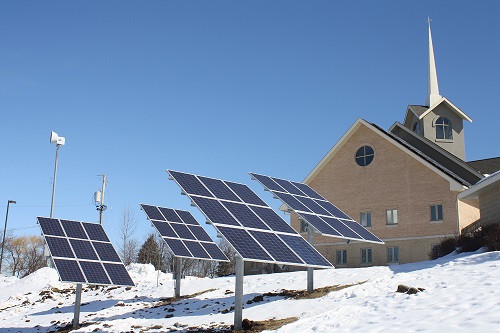
by Sam Dunaiski | Dec 14, 2018 | Solar, Solar for Good
RENEW Wisconsin’s Solar for Good program will issue 36 grants to Wisconsin nonprofit organizations to install new solar-electric systems. Altogether, these grants will total over $445,000 and will lead to more than $4.5 million in new solar investment. The new solar arrays, planned for installation over the next twelve months, will add 2.13 megawatts (MW) of new solar power to Wisconsin’s electric mix.
This round of funding featured a diverse group of awardees from every part of Wisconsin. The winning projects include:
- Beloit College will convert a former coal-fired power plant into a carbon-neutral student activity center, complete with solar electric and geothermal heating.
- Sawyer County Housing Authority will install solar arrays on 6 multi-family, low-income housing facilities, which will directly offset their residents’ utility bills
- Primates Inc, a sanctuary for retired primates from the research and film industry, plans to construct a 30-kilowatt array for their habitats near Westfield.
RENEW’s fall 2018 funding period builds on the success of Solar for Good’s previous rounds in the fall of 2017 and spring of 2018. During the first and second funding rounds, RENEW issued over $200,000 in grants, helping 23 Wisconsin-based nonprofits invest over $1.67 million in new solar projects.
“Solar for Good has reached new heights,” said Heather Allen, Program Director for RENEW Wisconsin. “With these 36 grants, Solar for good will generate $4.5 million in new solar projects. This will help nonprofits across the state lower their energy costs, inspire their communities, and promote a cleaner, healthier Wisconsin.”
The following organizations have been offered Solar for Good grants to install new solar electric systems:
Abinooji Aki, provides education on Native American values/teachings, Hayward
Attic Angel Place, a senior living campus and assisted living facility, Middleton
Beaver Dam Family Ice Arena, community ice-skating facility, Beaver Dam
Beloit College, liberal arts college, Beloit
Bethel Horizons, a retreat center and art education campus, Dodgeville
Blackhawk Evangelical, house of worship, Middleton
Christ Lutheran Church, house of worship, Spring Green
Housing Authority of Milwaukee, low-income housing provider, Milwaukee
Humane Society of Burnett County, safe haven for stray/unwanted animals, Webster
Juda School District, public education, Juda
Friends of Lawton Memorial Library, public library and learning center, La Farge
Literacy Network, adult reading, writing, and computer education facility, Madison
Madison Audubon Society, wildlife habitat protection, education, & advocacy, Madison
NeighborWorks Green Bay, low-income housing provider, Green Bay
Northland Lutheran High School, private education, Kronenwetter
Operation Fresh Start, adult education and job skill training facility, Madison
Oregon Ice Arena, community ice-skating facility, Oregon
Primates Inc, a sanctuary for primates retired from research and film industry, Westfield
Random Lake School District, public education, Random Lake
Redeemer Lutheran Church, house of worship, Milwaukee
Redeemer City Church, house of worship, Fitchburg
Sawyer County Housing Authority, low-income housing provider, Sawyer County
Sisters of Saint Francis, religious order, Green Bay
Solon Springs School District, public education, Solon Springs
St. Dennis Congregation, house of worship, Madison
Washburn Elementary and High Schools, public education, Washburn
Wisconsin Conference United Church of Christ, house of worship, Deforest
Two organizations have asked to remain anonymous at this time.
The Solar for Good program is primarily funded by philanthropists Cal and Laurie Coulliard of Deerfield. Solar for Good grants fund up to 20% of an organization’s solar installation. RENEW plans to issue another round of grant-funding in spring 2019. To learn more, please visit the Solar for Good website.
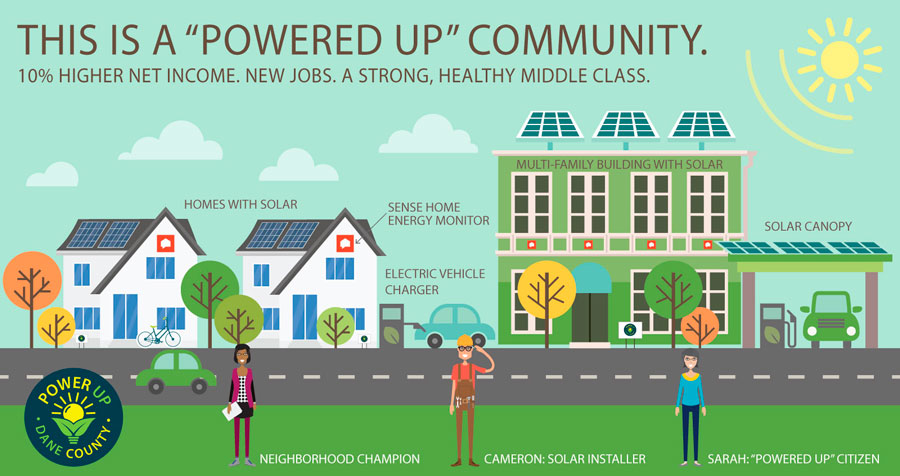
by Jane McCurry | Dec 3, 2018 | Electric Vehicles, Jobs, Programs, Renewables, Solar, Sustainability
Over the past three months, RENEW Wisconsin has been participating in an exciting and audacious challenge to develop ways to bolster the middle class of Dane County. UW-Madison was selected as one of four universities nationally to participate in a competition sponsored and funded by the Schmidt Futures Foundation, led by Google’s former CEO Eric Schmidt. UW’s program is called “Dream Up Wisconsin.”
The challenge is to increase the net income of 10,000 Dane County Families by 10%.
Our Plan: to “Power Up” Dane County families and communities with clean energy! We were one of 46 original applicants, and we were fortunate to be one of 11 applicants to receive $10,000 to more fully flesh out our proposal.
Our vision for Power Up Dane County is to create buzz about clean energy and provide community members the tools to adopt clean energy to reduce their monthly bills, create new jobs, and build a healthier community. We want everyone to have access to clean energy, from efficient homes to solar panels on their roof, and electric vehicles in their garage.
However, many middle class families don’t know that these technologies are available to them. Power Up is our idea to change that.
The program would start by empowering households to take control of their electricity bills using “Neighborhood Champions.” These champions will be excited members of the community who will help households install efficiency kits and the home energy sensor, Sense. Sense measures electricity consumption in real-time, and gives users a visual indication of their energy use through an app. By learning which devices in their home use the most electricity, residents can unplug energy hogs and save money.
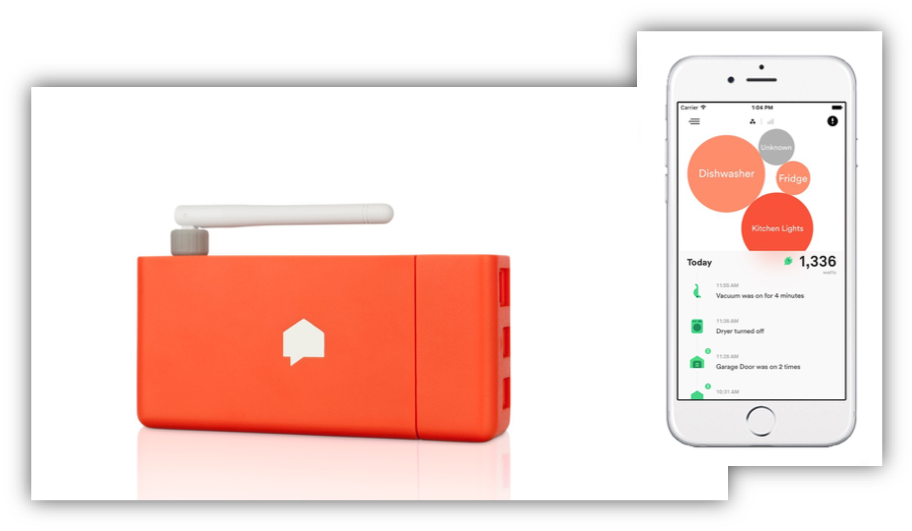
After they have more efficient homes and a better understanding of their energy use, we want to connect participants with solar installers, home weatherization technicians, car dealerships that specialize in electric vehicles, and additional rebates for their clean energy investments.
Power Up will make it desirable, easy, and financially feasible for participants to adopt clean energy, like solar panels and electric cars. These clean energy technologies will reduce air pollution and save families thousands of dollars per year on their energy bills.
Power Up is competing against 11 other proposals for the top 3 spots. Should we be selected for the next round of competition, we will pitch our proposal to Schmidt Futures in Arizona in late January.
We believe in a future that is “Powered Up” with clean energy technology. That future includes millions of dollars of in energy bill and healthcare savings, new clean energy jobs, and a healthy and prosperous middle class. The momentum around clean energy is building by the day. With Wisconsin utilities, counties, and municipalities committing to 100% renewable energy, we know the future of Wisconsin will be one with extensive clean energy adoption. Power Up is one vision for how to get there.
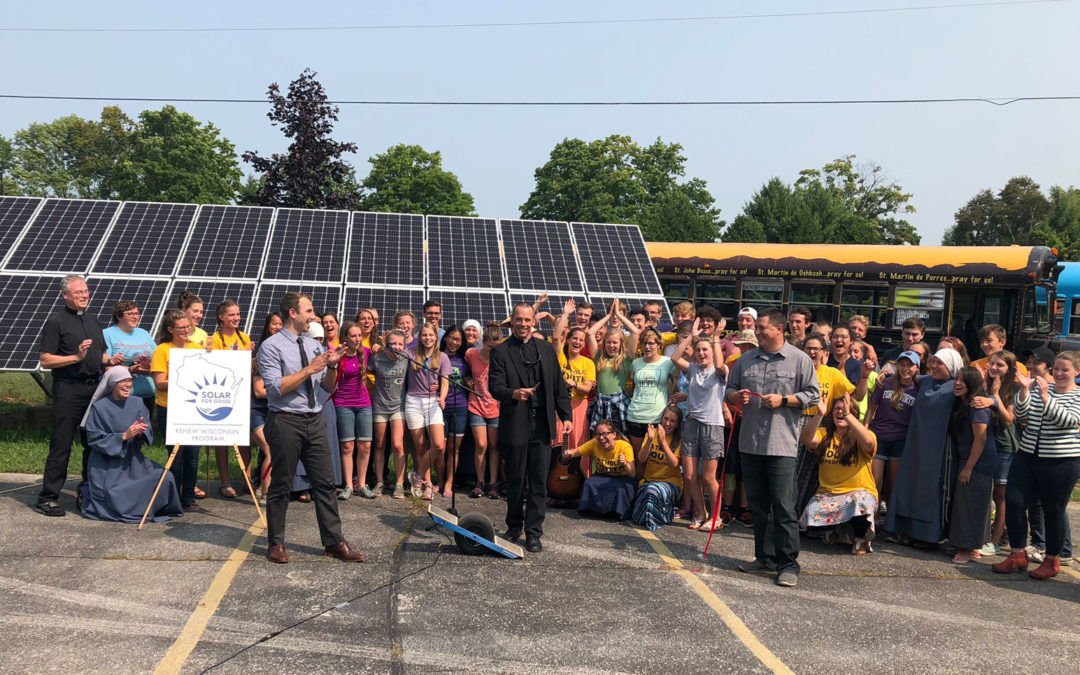
by Sam Dunaiski | Nov 30, 2018 | Local Initiatives, Programs, Solar, Solar for Good
This week, RENEW wrapped up our third round of Solar for Good funding. We are happy to announce that this will be our most successful funding cycle to date!
RENEW received applications from 39 nonprofits and we plan on funding as many as 36 projects. Altogether, these grants will result in as much as $4.5 million in new solar investment, totaling 2.13 MEGAWATTS of clean, renewable, solar power.
This round of funding also featured our most diverse group of applicants to date. We approved solar grants for organizations ranging from K-12 schools to low-income housing to animal shelters. Proposals came in from across the state, from Washburn to Milwaukee, Dodgeville to Green Bay, and nearly everywhere in between.
Some of the nonprofits who will receive grants upon successfully completing their solar projects include:
- Beloit College plans on converting a former coal-fired power plant into a carbon-neutral student activity center, complete with solar panels and geothermal heating
- The Sisters of St. Francis in Green Bay will be adding an additional 98 kilowatts of solar power to the existing array at their motherhouse
- Sawyer County Housing Authority will install solar arrays on 6 multi-family, low-income housing facilities, which will directly offset their residents’ utility bills
This fall 2018 round builds on the Solar for Good success from prior rounds in the fall of 2017 and spring of 2018. During the first and second funding rounds, RENEW issued over $200,000 in grants, helping 23 Wisconsin-based nonprofits invest over $1,677,000 in new solar projects. These projects totaled 730 kilowatts…enough to power approximately 150 homes.
RENEW would like to extend our gratitude to Cal and Laurie Couillard, founders of the Couillard Foundation which funds Solar for Good. Their generosity and devotion to renewable energy has spearheaded the opportunity to expand solar in tremendous ways. Through Solar for Good, solar power in Wisconsin is developing incredible momentum that we plan on build on in the coming years.









